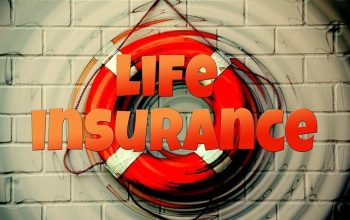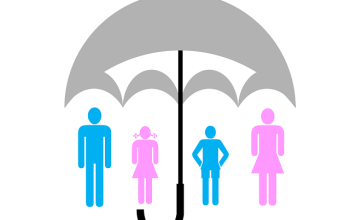General Liability Insurance is a critical safety net for businesses and individuals, safeguarding against financial fallout from third-party claims involving bodily injury, property damage, or personal injuries such as slander or libel. It's particularly important for small businesses to understand the specific coverage needs, including Professional Liability Insurance for protection against professional negligence, Product Liability Insurance for issues arising from products sold or used, and Public Liability Insurance for public events and interactions with non-owned entities. Small Business Insurance often encompasses these essential coverages. For those offering specialized services, Professional Liability Insurance, also known as Errors and Omissions (E&O) insurance, is crucial to mitigate risks from service-related errors or omissions. Product Liability Insurance ensures protection against defective products causing consumer injury. Public Liability Insurance extends coverage to incidents involving the public. Collectively, these insurance types are integral for navigating the complexities of business operations and ensuring financial security in the face of legal actions. It's advisable for businesses to regularly review their policies to adapt to changing regulatory standards and evolving business activities.
When safeguarding against unforeseen events, Third-Party Liability insurance stands as a pivotal shield for both businesses and individuals. This coverage is indispensable in mitigating financial risks from legal claims arising from damages or injuries to third parties. For instance, General Liability Insurance is a cornerstone for businesses, safeguarding against common mishaps like customer slips and falls. Similarly, Professional Liability Insurance offers protection for professionals whose work may result in different types of liability claims. Small Business Insurance packages often include Business Liability Coverage, which is essential for startups and SMEs to navigate the complexities of their industry without undue financial burden. Public Liability Insurance extends this protection to a broader range of activities, ensuring peace of mind for event organizers or community groups. Product Liability Insurance, another critical aspect, specifically addresses claims related to product defects or malfunctions. By understanding and tailoring your coverage with Commercial Liability Insurance, you can effectively manage risks, ensuring that unexpected legal entanglements don’t become financial disasters. This article delves into these aspects, offering a comprehensive guide to secure your interests effectively.
- Understanding Third-Party Liability Insurance: A Comprehensive Guide for Businesses and Individuals
- Navigating Different Types of Third-Party Liability Coverage: From General to Product Liability
- Tailoring Your Protection: The Role of Professional and Commercial Liability Insurance in Risk Management
Understanding Third-Party Liability Insurance: A Comprehensive Guide for Businesses and Individuals
Understanding the nuances of General Liability Insurance is crucial for businesses and individuals alike, as it forms a shield against financial repercussions from third-party claims. This comprehensive coverage, often referred to as Business Liability Coverage or Commercial Liability Insurance, safeguards entities from legal responsibilities resulting from bodily injury, property damage, or personal injury such as slander or libel. For businesses, it is imperative to consider the implications of incidents involving clients or customers, where a simple slip-and-fall accident could lead to costly lawsuits. Public Liability Insurance extends this protection to a broader range of activities, ensuring that your business is covered in various settings, from your office to trade shows and public events.
Individuals, particularly those involved in professional capacities, also benefit significantly from understanding the scope of Professional Liability Insurance, which addresses claims related to professional services or advice. If your work involves interacting with products, it’s equally important to consider Product Liability Insurance, which covers harm caused by faulty goods. Both groups can appreciate the breadth of protection offered by these policies, which are tailored to address specific risks and offer peace of mind. For small businesses, in particular, navigating the world of liability insurance can be daunting; however, understanding the need for and implications of such coverage is essential for maintaining operations and safeguarding against unforeseen events that could otherwise lead to significant financial strain.
Navigating Different Types of Third-Party Liability Coverage: From General to Product Liability
When considering Third-Party Liability insurance, it’s crucial for both individuals and businesses to understand the spectrum of coverage available. General Liability Insurance serves as a foundational shield, safeguarding against claims resulting from bodily injury, property damage, and personal and advertising injuries. This broad protection is essential for various business activities, ensuring that day-to-day operations are not disrupted by unforeseen legal actions. For professionals, Professional Liability Insurance tailors coverage to the unique risks associated with their services. It protects against claims of negligence or harm due to professional advice, decisions, or services provided, which can be particularly relevant in fields like medicine, law, and accounting.
Businesses with products on the market must also be vigilant about Product Liability Insurance, which addresses potential liabilities arising from defective products or harm caused by product usage. This coverage is vital, considering the stringent standards and consumer expectations in today’s marketplace. Public Liability Insurance extends protection to scenarios where a business interacts with the public, offering security for incidents that occur on rented or borrowed property, or at public events. Small Business Insurance packages often include these types of liability coverage, ensuring comprehensive protection against third-party claims. Commercial Liability Insurance further expands the scope of coverage for businesses of all sizes, addressing a wide array of risks and ensuring peace of mind. It’s through this multifaceted approach to Third-Party Liability insurance that both businesses and individuals can navigate different types of liability coverage, from general to product liability, effectively safeguarding their financial well-being against legal claims.
Tailoring Your Protection: The Role of Professional and Commercial Liability Insurance in Risk Management
In today’s litigious environment, tailoring your protection to match the specific needs of your business is paramount. General Liability Insurance serves as a foundational shield against claims of bodily injury, property damage, and personal and advertising injury caused by your operations. It is an essential component of small business insurance, safeguarding against the financial repercussions of third-party claims that can arise from everyday business activities. For professionals, Professional Liability Insurance, also known as Errors and Omissions (E&O) insurance, offers specialized protection against claims alleging negligence or mistakes in the rendering of professional services. This coverage is crucial for any industry where advice, recommendations, or designs are provided to clients, ensuring that a single error does not lead to costly legal battles or financial ruin.
Furthermore, businesses with products on the market should consider Product Liability Insurance as part of their commercial liability insurance portfolio. This coverage extends beyond General Liability by addressing claims specifically related to product defects or failures. It ensures that even if a third-party is injured due to a malfunctioning or flawed product, your business remains financially solvent. The role of Public Liability Insurance in risk management cannot be overstated, especially for businesses that interact with the public or operate on rental or leased premises. It covers liability exposures that are not owned by the business but can still lead to significant legal claims. Taken together, these forms of Business Liability Coverage form a comprehensive safety net that allows companies to operate confidently, knowing they are equipped to handle the unforeseen circumstances that may lead to third-party claims. It’s important for businesses to regularly assess their coverage needs and adjust their policies accordingly, as the landscape of liability can shift with changes in business practices, product offerings, and regulatory environments.
In conclusion, Third-Party Liability insurance serves as a critical safeguard for both businesses and individuals against the unforeseen financial repercussions of legal claims involving third parties. As outlined in this article, understanding the nuances of General Liability Insurance, Professional Liability Insurance, and the various types of coverage available, such as Business Liability Coverage, Public Liability Insurance, Small Business Insurance, Product Liability Insurance, and Commercial Liability Insurance, is essential for effective risk management. By tailoring your liability insurance to fit your specific needs, you can rest assured that you are adequately protected. It’s clear that investing in robust Third-Party Liability coverage is not just a prudent business decision but also a wise personal one. Whether you own a company or drive a car, safeguarding yourself against the risks of liability claims is a responsible step towards securing your financial well-being and peace of mind.



